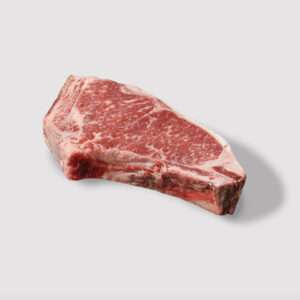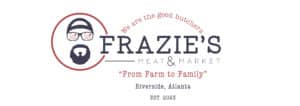Exploring the Rich Flavors and Benefits of Dry-Aged Beef
Dry-aged beef is a culinary delight that offers a depth of flavor and tenderness unmatched by other methods of beef preparation. This time-honored technique involves aging beef under carefully controlled conditions to enhance its taste and texture. At Frazie’s Meat & Market, we offer premium dry-aged beef that has been meticulously aged to bring out its best qualities. In this article, we’ll delve into what dry-aged beef is, how the dry-aging process works, and why it’s a must-try for any meat lover.

Understanding Dry-Aged Beef
Defining Dry-Aged Beef
Dry-aged beef is beef that has been aged in a controlled environment for several weeks, sometimes up to several months. During this time, the beef is stored at a specific temperature, humidity, and air circulation to allow natural enzymes to break down the muscle tissue, enhancing the meat’s flavor and tenderness. The result is a rich, concentrated beefy flavor and a tender texture that sets dry-aged beef apart from fresh or wet-aged beef.
The Dry-Aging Process
The dry-aging process is an intricate balance of time, temperature, humidity, and air circulation. Here’s how it works:
- Selection of Beef: The process begins with selecting high-quality beef cuts, typically larger cuts like ribeye, strip loin, or sirloin. These cuts are chosen for their marbling and thickness, which hold up well during the aging process.
- Temperature and Humidity Control: The beef is placed in a dry-aging room or chamber where the temperature is kept just above freezing, typically between 34°F and 38°F. Humidity levels are carefully controlled to prevent the beef from drying out too quickly, usually around 80-85%.
- Air Circulation: Proper air circulation is essential to ensure that the beef ages evenly. Fans are used to keep the air moving, which helps form the dry, protective crust on the outside of the beef.
- Time: The beef is aged for a minimum of 14 days, but it can be aged for up to 120 days or more, depending on the desired flavor intensity. The longer the beef is aged, the more intense and complex the flavor becomes.
- Trimming: After the aging process is complete, the outer crust, which has dried and darkened, is trimmed away to reveal the richly marbled, tender meat inside. This meat is then cut into steaks or other portions for cooking.
Dry-Aged vs. Wet-Aged Beef
While dry-aged beef is aged in the open air, wet-aged beef is sealed in vacuum-packed plastic and aged in its own juices. Wet-aging is a faster, more cost-effective process that keeps the beef moist, but it doesn’t develop the same depth of flavor as dry-aging. Dry-aged beef, on the other hand, loses some moisture during the aging process, which concentrates its flavors and results in a more robust taste.
Benefits of Dry-Aged Beef
Enhanced Flavor
The most significant benefit of dry-aged beef is its flavor. As the beef ages, natural enzymes break down the muscle tissue, concentrating the flavors and creating a rich, nutty, and beefy taste. This flavor is often described as more intense and complex compared to fresh or wet-aged beef, with a slight earthiness that comes from the aging process.
Improved Tenderness
Dry-aging not only enhances the flavor but also tenderizes the beef. The natural breakdown of proteins during the aging process makes the meat more tender, resulting in a melt-in-your-mouth texture. This tenderness is particularly noticeable in cuts like ribeye and strip loin, which are already known for their marbling and flavor.
Unique Culinary Experience
For many food enthusiasts, dry-aged beef offers a unique culinary experience. The concentrated flavors and tender texture make it a special treat, often reserved for fine dining or special occasions. Whether you’re a seasoned steak lover or new to dry-aged beef, trying it for the first time is an experience that’s sure to leave a lasting impression.
How to Cook Dry-Aged Beef
Selecting the Right Cut
When cooking dry-aged beef, it’s important to start with the right cut. Popular cuts for dry-aging include ribeye, strip loin, and porterhouse, which all benefit from the process’s flavor-enhancing effects. At Frazie’s Meat & Market, we offer a variety of dry-aged cuts, each selected for its marbling and potential to develop rich flavors.
Preparation Tips
- Bring to Room Temperature: Before cooking, let the dry-aged beef come to room temperature. This helps it cook more evenly, ensuring that the inside reaches the desired doneness without overcooking the exterior.
- Simple Seasoning: Dry-aged beef has a robust flavor that doesn’t require heavy seasoning. A generous sprinkle of kosher salt and freshly ground black pepper is usually all you need to enhance the natural taste of the meat.
- Preheat the Pan or Grill: Whether you’re pan-searing or grilling, make sure your cooking surface is hot before adding the beef. This ensures a good sear, which locks in the juices and creates a flavorful crust.
Cooking Methods
Pan-Searing:
Pan-searing is one of the best methods for cooking dry-aged steaks. Here’s how to do it:
- Preheat a Cast-Iron Skillet: Heat a cast-iron skillet over high heat until it’s smoking hot.
- Add Oil: Add a small amount of oil with a high smoke point, like grapeseed or canola oil, to the skillet.
- Sear the Steak: Place the steak in the skillet and sear for 2-3 minutes on each side until a crust forms.
- Finish in the Oven (Optional): For thicker cuts, you may need to finish cooking the steak in a preheated oven at 400°F. Place the skillet in the oven and cook until the steak reaches your desired internal temperature.
- Rest the Steak: Let the steak rest for a few minutes before slicing. This allows the juices to redistribute, resulting in a juicier bite.
Grilling:
Grilling is another excellent way to cook dry-aged beef, especially for larger cuts like ribeye or strip loin.
- Preheat the Grill: Set your grill to high heat and oil the grates to prevent sticking.
- Grill the Steak: Place the steak on the grill and cook for 2-4 minutes per side, depending on thickness, for a medium-rare finish.
- Use Indirect Heat (Optional): For thicker cuts, you can move the steak to a cooler part of the grill after searing to finish cooking over indirect heat.
- Rest the Steak: As with pan-searing, let the steak rest before slicing to retain its juices.
Reverse Searing:
Reverse searing is ideal for thick cuts of dry-aged beef. This method involves slowly cooking the steak at a low temperature before searing it at high heat.
- Preheat the Oven: Set your oven to 250°F.
- Slow Cook the Steak: Place the steak on a wire rack set over a baking sheet and cook in the oven until it reaches an internal temperature of 10-15°F below your desired doneness.
- Sear the Steak: Heat a skillet over high heat and sear the steak for 1-2 minutes per side to form a crust.
- Rest the Steak: Let the steak rest before serving.
Serving Suggestions
Dry-aged beef is best enjoyed on its own or with simple accompaniments that enhance its flavor without overpowering it. Consider serving it with:
- Roasted Vegetables: The earthy flavors of roasted root vegetables like carrots, parsnips, and potatoes complement the richness of dry-aged beef.
- Red Wine Reduction: A sauce made from red wine, beef stock, and shallots adds depth and pairs beautifully with the beef’s complex flavors.
- Fresh Salad: A crisp salad with a tangy vinaigrette can provide a refreshing contrast to the richness of the beef.
Frequently Asked Questions About Dry-Aged Beef
- What is dry-aged beef?
Dry-aged beef is beef that has been aged in a controlled environment for several weeks to enhance its flavor and tenderness. The aging process allows natural enzymes to break down the muscle tissue, resulting in a rich, concentrated taste. - How long is dry-aged beef aged?
Dry-aged beef is typically aged for a minimum of 14 days, but it can be aged for up to 120 days or more, depending on the desired flavor intensity. - What does dry-aged beef taste like?
Dry-aged beef has a deep, concentrated beefy flavor with nutty, earthy undertones. The aging process intensifies the flavor and creates a tender texture that is unmatched by other methods. - Is dry-aged beef safe to eat?
Yes, dry-aged beef is safe to eat. The aging process is carefully controlled to prevent harmful bacteria from developing. The outer layer, which may develop mold, is trimmed away before the meat is sold. - How should I cook dry-aged beef?
Dry-aged beef is best cooked using high-heat methods like pan-searing, grilling, or reverse searing. These methods help develop a flavorful crust while keeping the inside tender and juicy. - Why is dry-aged beef more expensive?
Dry-aged beef is more expensive due to the time, care, and space required for the aging process. The beef also loses moisture and weight during aging, which increases the cost per pound.
Conclusion
Dry-aged beef is a culinary experience like no other, offering rich, intense flavors and a tender texture that’s hard to beat. Whether you’re cooking for a special occasion or simply want to treat yourself to something extraordinary, dry-aged beef from Frazie’s Meat & Market is the perfect choice. By understanding the dry-aging process and how to cook it properly, you can enjoy this premium meat at its best. Visit us today to explore our selection of dry-aged beef and bring home a taste of luxury.

